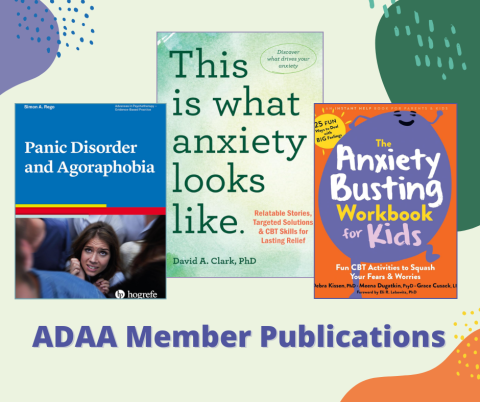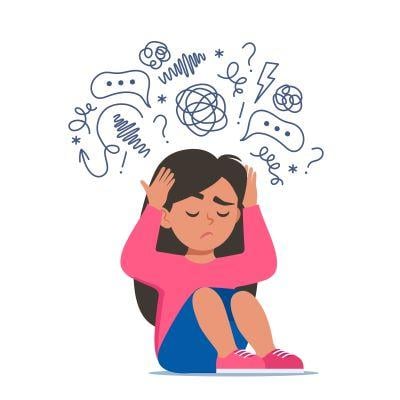What is Autism Spectrum Disorder (ASD)?
Autism Spectrum Disorder, also known as ASD, is a developmental disability that affects communication, socialization, and behavior. 2 While you can be diagnosed at any age, it is common for symptoms to develop within early childhood, and these symptoms typically last a lifetime. 1 According to the Centers for Disease Control and Prevention (CDC), it is estimated that 1 in every 68 children have ASD.3 In the Fifth Edition of the Diagnostic and Statistical Manual of Mental Disorders (DSM-5) created in 2013, previously separate disorders, including autistic disorder, pervasive developmental disorder not otherwise specified (PDD-NOS), and Asperger syndrome would all become known as ASD. 4
Common Behaviors
The following is a list of common behaviors and signs of ASD in children or adults. However, it should not be used as a diagnostic tool.
- Little or inconsistent eye contact
- Not looking or listening to others
- Often not pointing at objects to show interest
- Trouble relating to others
- Repeated behaviors, words, or phrases
- Being very interested but unable to talk, play, or relate to others,
- Not interested at all in others
- Trouble adapting to change
- Sensitivity to smells, noises, tastes, temperature, or other sensory inputs
Although those with ASD may have learning, social, and behavioral difficulties, some may also have strengths. Strengths may include creativity, kindness, love of learning, among many others. 5
It is also important to note that not all people with ASD behave, learn, or think in the same way, rather the condition is considered to be a “spectrum” condition because of the wide variety of type and severity of symptoms. 2
If you think you, your child, or loved one may have ASD, it is important to contact a primary health doctor who will refer you, your child, or loved one to a specialist for further evaluation if symptoms of ASD are present.
How is ASD related to anxiety and depressive disorders? 6
- 40% of people with ASD have elevated levels of anxiety or one or more anxiety disorder
- 30% of people with ASD have a Specific Phobia
- 17% of people with ASD have Obsessive-Compulsive Disorder (OCD)
While anxiety is quite prevalent for those who have ASD, it can be difficult to decipher anxiety from common autism behaviors, as some behaviors can present similarly. Anxious behaviors in children with ASD can include having tantrums, running away, avoiding new tasks, and hitting. 7
The communicative and social challenges of ASD often can get in the way of properly diagnosing someone with anxiety. Sometimes patients have a difficult time explaining feelings (called alexithymia), which is part of the diagnostic process typically. 8 However, as anxiety and autism research advances, diagnostic tools have been created to assist in diagnosing and later treating anxiety in children and teens with ASD. (8)
If you think you, your child, or loved one with ASD may have anxiety disorder as well, you can speak with your primary health provider, who can refer you to a specialist. We also invite you to visit ADAA's Find-a-Therapist platform.
ADAA Resources:
- Living with OCD, Autism and Depression, personal story
- When Autism and Depression Come Together: What We Know, How to Manage, and Key Resources - Webinar Presented in Partnership SPARK
- Diagnosing Depression in People with Autism: A Guest Blog Post from SPARK - Part 1 - Blog
- The Art and Science of Treating Depression in Autism: A Guest Blog Post from SPARK - Part 2 - Blog
- ASD and Anxiety - My Story - Story of Triumph
- Anxiety in Autism Spectrum Disorder - Blog
- Autism and Anxiety Disorders: Part 1 - Guest Blog Post from SPARK
- Autism and Anxiety Disorders: Part Two: Diagnosing and Treating Anxiety in People with Autism - Guest Blog Post from SPARK
- Building Bridges: Bringing Anxiety Treatments to Children and Adolescents With Autism Spectrum Disorder- Webinar
- Optimizing Exposure Therapy for Youth with Complex Comorbidities and Presentations - Webinar
Additional Resources:
- What’s the Link Between Autism and Anxiety? Experts Weigh In - Healthline.com
References:
- Centers for Disease Control and Prevention. (2020, March 25). What is Autism Spectrum Disorder? CDC. https://www.cdc.gov/ncbddd/autism/facts.html
- The National Institute of Mental Health. (2018, March). Autism Spectrum Disorder. https://www.nimh.nih.gov/health/topics/autism-spectrum-disorders-asd/
- National Institute of Neurological Disorders and Stroke. (2020, March 13). Autism Spectrum Disorder Fact Sheet. NINDS.NIH.GOV.
- American Psychiatric Association. (2013). Diagnostic and Statistical Manual Of Mental Disorders, Fifth Edition (5th ed.). APA. https://doi.org/10.1176/appi.books.9780890425596
- Kirchner, J., Ruch, W., & Dziobek, I. (2016). Brief Report: Character Strengths in Adults with Autism Spectrum Disorder Without Intellectual Impairment. Journal of autism and developmental disorders, 46(10), 3330–3337. https://doi.org/10.1007/s10803-016-2865-7
- Meier, S. M., Petersen, L., Schendel, D. E., Mattheisen, M., Mortensen, P. B., & Mors, O. (2015). Obsessive-Compulsive Disorder and Autism Spectrum Disorders: Longitudinal and Offspring Risk. PloS one, 10(11), e0141703. https://doi.org/10.1371/journal.pone.0141703
- Sarris, M. (2020, July 8). Anxiety's Toll on Children and Adults with Autism. SPARK. https://sparkforautism.org/discover_article/anxiety-autism/
- Sarris, M. (2020, July 9). Diagnosing and Treating Anxiety in People with Autism. SPARK. https://sparkforautism.org/discover_article/diagnosing-treating-anxiety-autism/
The content of this page was published in July, 2021.















